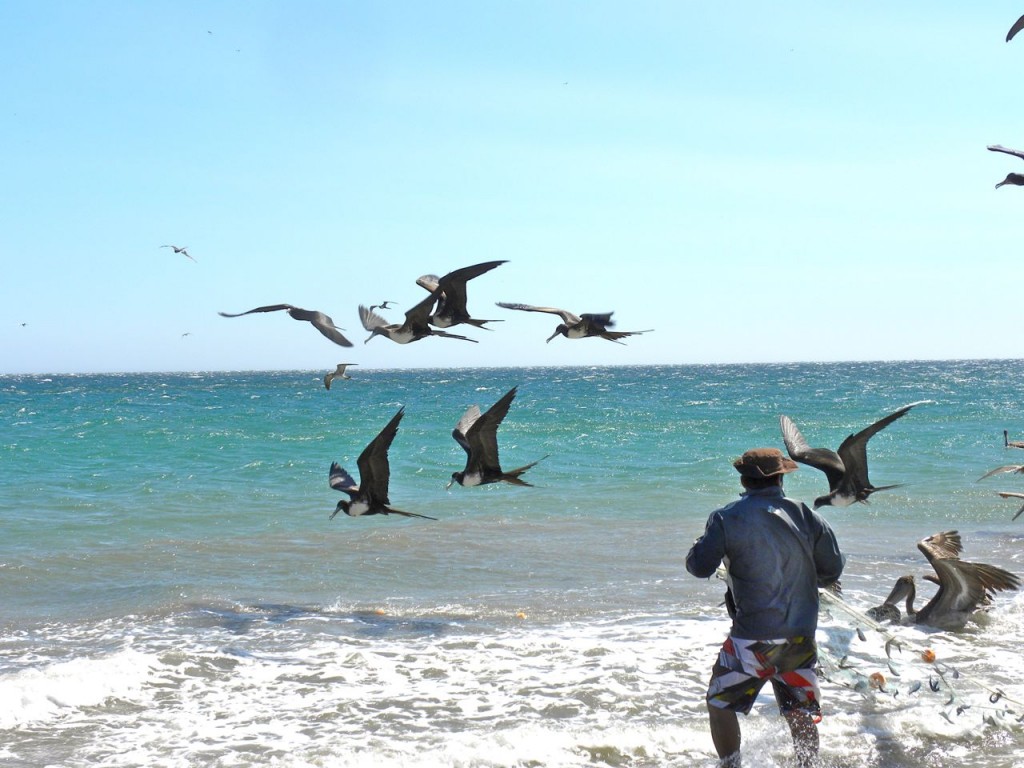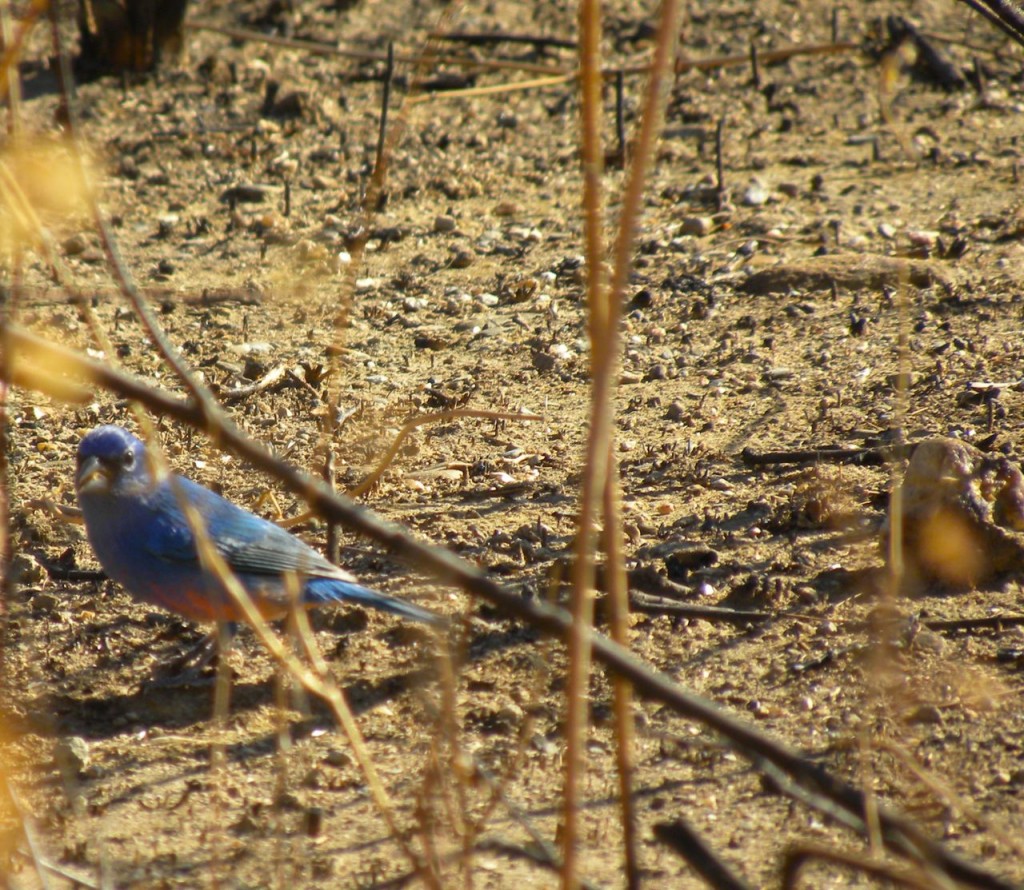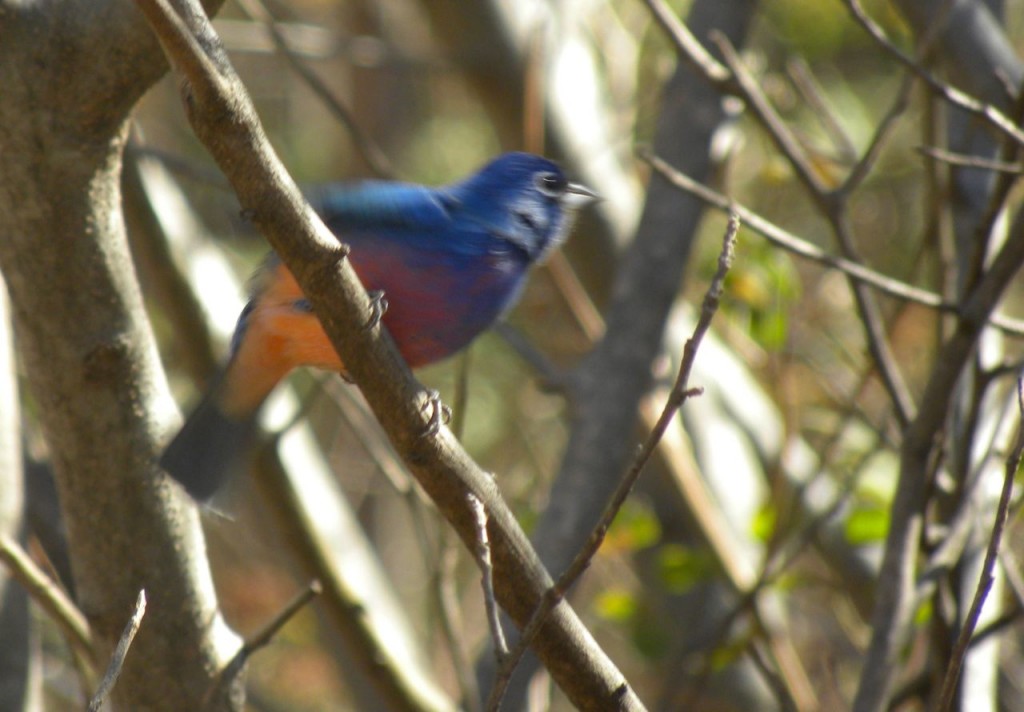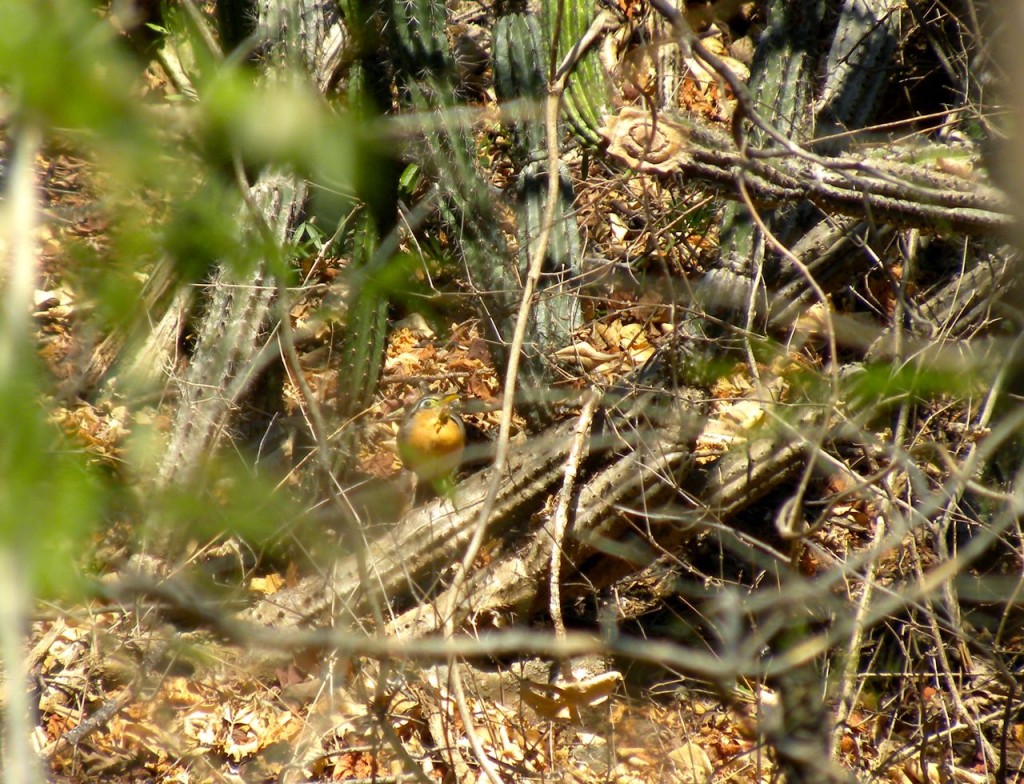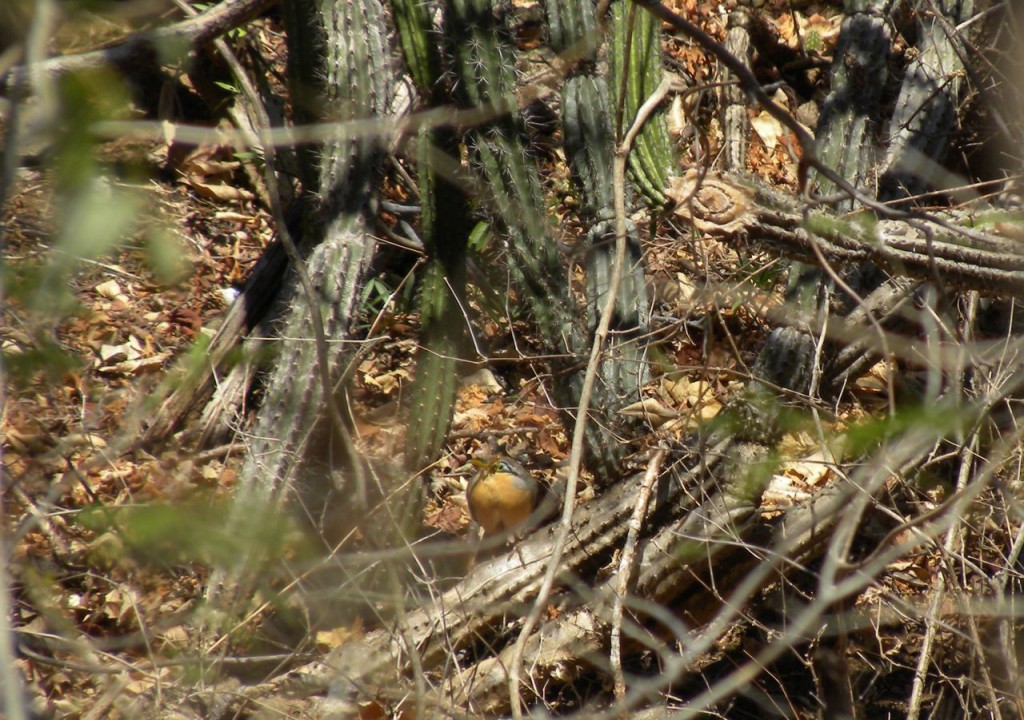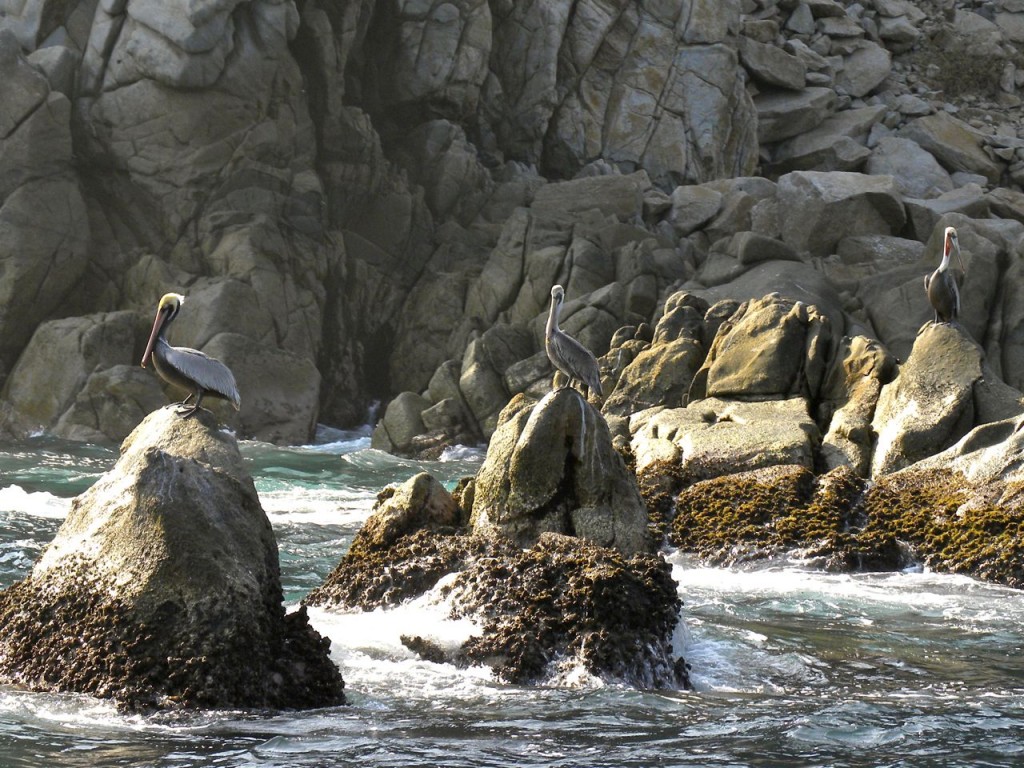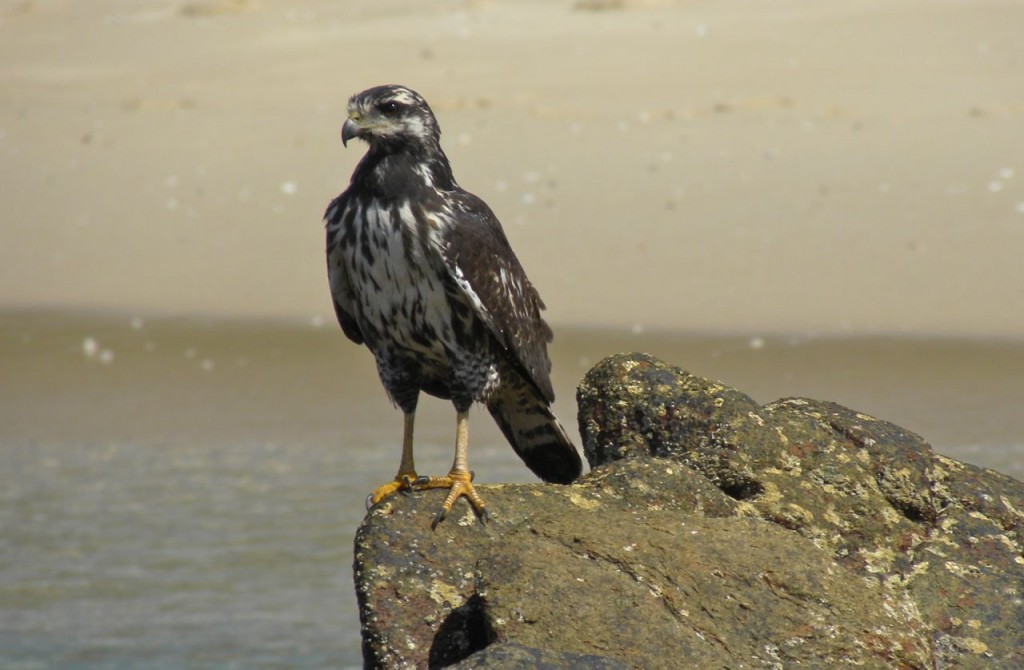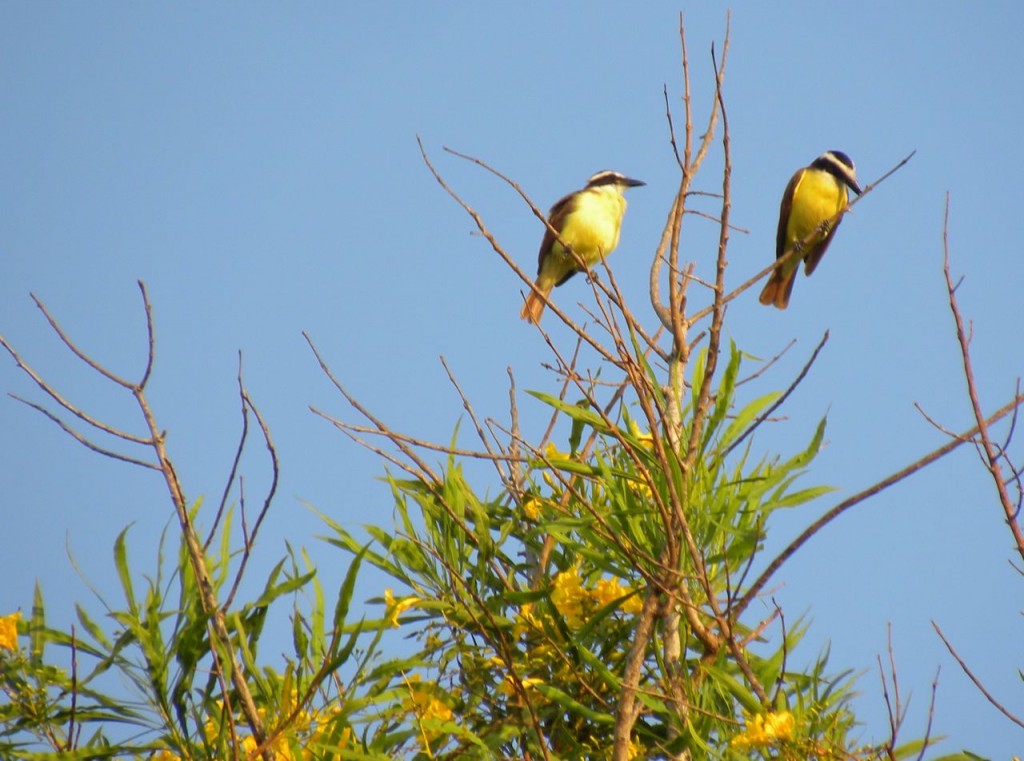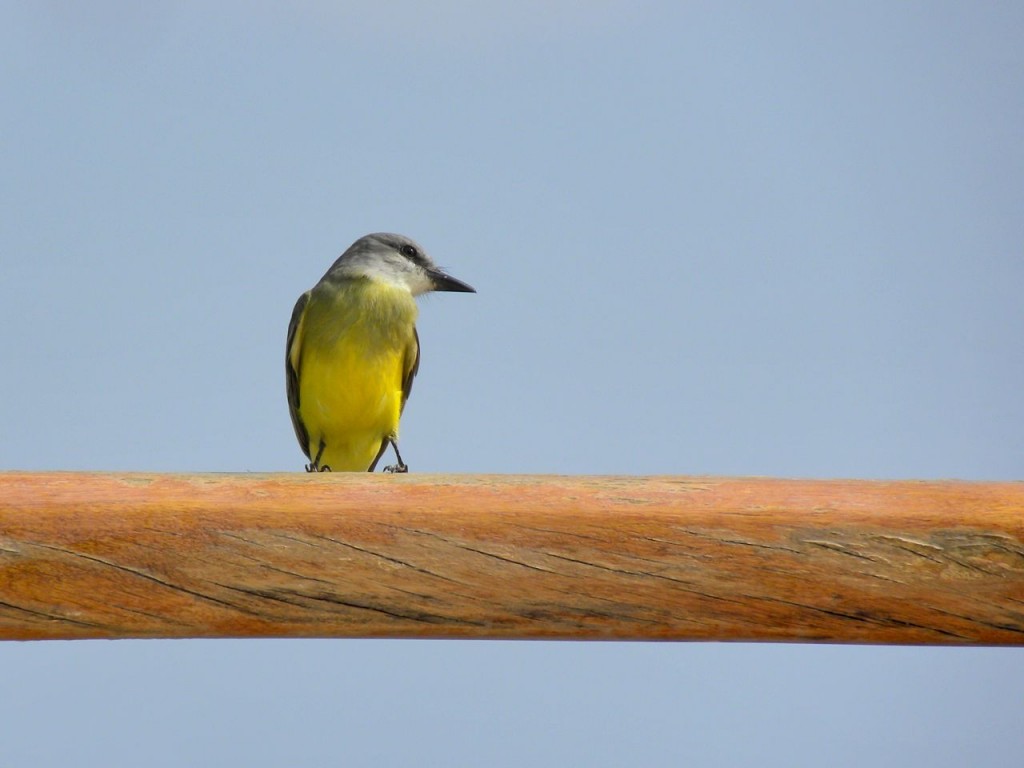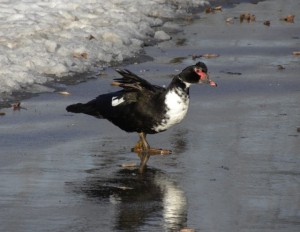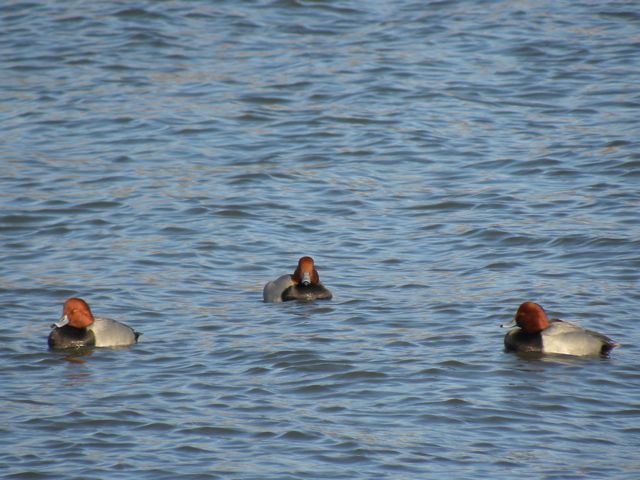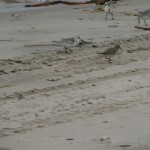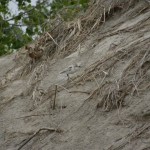January 17 2013. Magnificent Frigatebirds must have impressed early sea-goers of all ranks, they’re so masterful soaring in circles along the boundary between land and ocean. Watching them through binoculars I wondered how many lessons in aeronautical design are held in those long-winged proportions, some of mankind’s most frail-looking competitive gliders either did or should owe a lot to the frigatebird.
On our travels today we stopped for lunch at a Pacific beach, Playa Cangrejo. It is perhaps five kilometres long, an arcing bay punctuated at either end by towering rock outcrops. The wind blows so furiously along the shoreline that uncounted years of drifting sand has piled over these terminal-rocks creating massive sandscapes, The sea was furious with white-horses tearing off the wave-tops. In the vernacular of my childhood, white-horses were more rampant dynamic and dangerous than mere whitecaps.
At the shoreline a small group of fishermen was working the close-inshore waters netting fish, usually no more than fingerlings but enough good sized fish to eke out a living. Brown Pelicans and Magnificent Frigatebirds knew a living when they saw it too. They gathered around the fishermen as they hauled the nets in and waited anxiously for whatever was thrown their way. The pelicans stood beside the men while the frigatebirds soared and swooped overhead.
I never tired of trying to capture the classic frigatebird photograph but this one is among the best, showing the mutually workable, if sometimes strained, coexistence of fisherman and birds.
